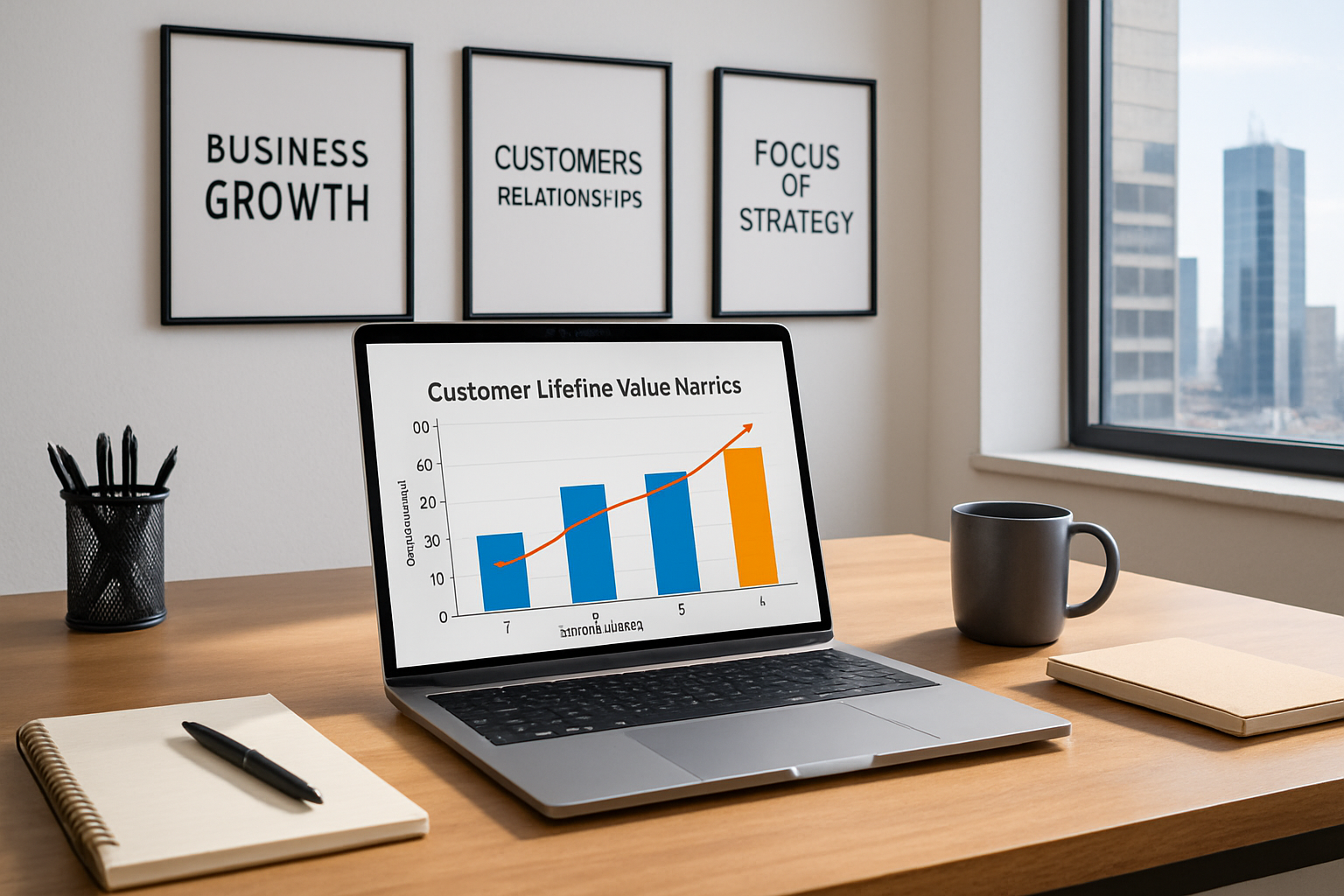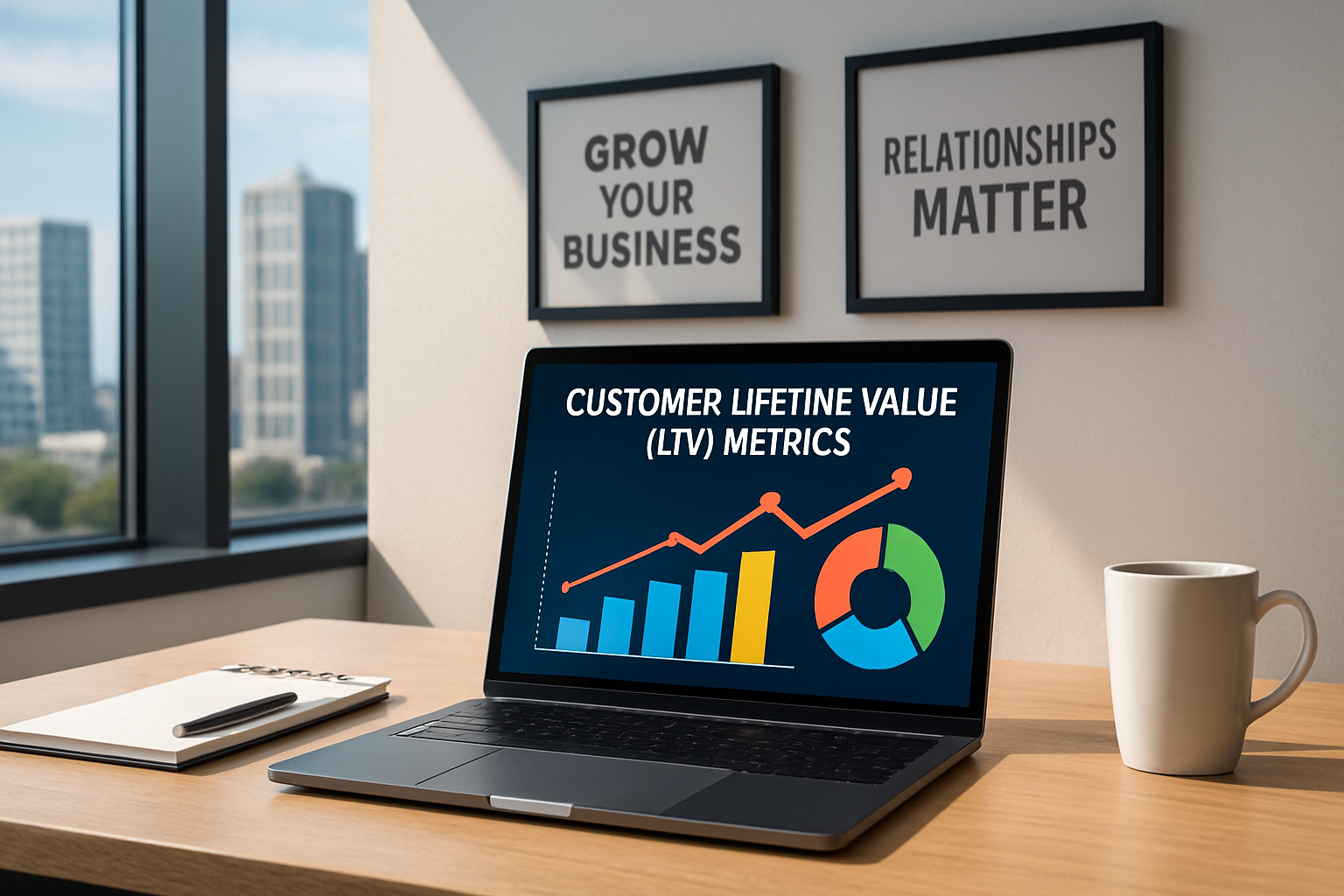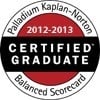Maximize every customer relationship and fuel sustainable growth using LTV insights.
You probably think a sale is a sale. Many business owners I talk to feel the same way. But what if I told you that one customer could be worth twice as much as another, even if their first purchase looks similar?

The secret is looking beyond that first transaction. It's about understanding the entire customer relationship you have with someone. This concept is called customer lifetime value (LTV), and it's one of the most powerful metrics you can use to grow your business.
Focusing on the right customers is how you build a profitable and sustainable company. The journey starts with understanding and calculating your customer lifetime value (LTV).
Use Our Hubspot Inbound Marketing and Sales ROI Calculator to Find out the ROI you can Get From Using Hubspot Inbound Marketing and Sales Software.
What Is Customer Lifetime Value (LTV), Really?
Let's get straight to it. Customer lifetime value (LTV) is the total profit your business expects to make from a single customer over their entire time with you. It's not about one invoice or one project; it's a key metric for understanding long-term profitability.
Instead, it's a forecast of a customer's total worth. Thinking this way forces you to focus on building strong customer loyalty and relationships, not just quick wins. This small shift in perspective changes everything about how you approach sales, marketing, and service.
It's the difference between seeing a customer as a one-time transaction and a long-term partner. This mindset is what separates struggling businesses from those that achieve sustainable growth. The ltv metric is central to this way of thinking.
The Story of Two Customers: A Real-Life LTV Breakdown
I was working with a client who celebrated every closed deal equally. They couldn't understand why their cash flow felt so tight despite hitting their sales numbers. I asked them to pull the data on two of their clients, and the results were eye-opening.
On the surface, Customer A and Customer B looked very similar. Their initial deal sizes were close, and their profit margins were almost identical. But when we dug deeper into their customer behavior, a very different story emerged.
Here's a simplified look at what we found.
| Metric | Customer A | Customer B |
|---|---|---|
| Average Purchase Value | $6,025 | $6,880 |
| Profit Margin | 83% | 81% |
| Purchases Per Year | 1.69 | 3.43 |
| Customer Lifetime Value (LTV) | $10,173 | $23,612 |
Why One-Time Sales Don't Build Wealth
Look at those final numbers. Customer B was worth more than double Customer A to the business. How could that be?
The answer was in their buying frequency and overall customer lifespan. Customer B was a repeat buyer who came back over and over, while Customer A was more of a one-time deal. This company was spending the same effort on user acquisition for both, but getting vastly different returns.
This is the power of a recurring revenue strategy in action. That simple analysis changed how they viewed their entire sales process and marketing spend. They started focusing on acquiring more customers like B, who demonstrated a high LTV.

Why You Absolutely Need to Calculate Customer Lifetime Value (LTV)
Knowing your LTV isn't just an interesting accounting exercise. It directly impacts your most important business decisions, from marketing to product development. It gives you the clarity to build a truly scalable business and understand your long-term profitability.
Smarter Marketing and Sales Spending
Have you ever wondered how much you can afford to spend to get a new customer? LTV is the answer. It lets you calculate the critical LTV to CAC ratio, which compares lifetime value to your customer acquisition cost (CAC).
In my days running complex LinkedIn Ads campaigns for software companies, knowing the LTV was everything. If a customer was worth $50,000 over their lifetime, we could confidently spend thousands to acquire them. Without that number, you're just guessing with your ad budget on social media platforms.
A healthy business model typically sees an LTV that is at least three times the CAC. This ratio indicates your user acquisition efforts are profitable over a set period. Anything less, and you might be losing money on every new customer you bring in.
Expert Insight:
SaaS companies with LTV/CAC ratios above 3:1 tend to see strong, sustainable revenue growth.SAP BW Consulting, Inc.
Improving Customer Retention
When you know a customer could be worth thousands of dollars over the next few years, you work much harder to keep them happy. LTV highlights the immense value of your existing customer base. It makes you focus on the user experience and customer lifecycle.
The data is clear on this. It can cost five times more to attract a new customer than to keep an existing one. High LTV businesses are almost always fantastic at customer retention and excel at reducing churn.
A focus on LTV encourages proactive retention efforts. You start looking for early warning signs of an unhappy customer and work to address issues before they lead to a low customer churn rate. This focus on customer satisfaction is a direct result of understanding lifetime values.
Identifying Your Best Customers
Calculating LTV helps you build a detailed picture of your ideal customer. You can analyze key data to see which industries, company sizes, or job titles lead to the most profitable long-term relationships. This is priceless information for any management professional.
You can then point your sales and marketing teams in the right direction. It's like giving them a map to buried treasure, helping them find customers based on proven success factors. This lets you stop wasting resources chasing customers who will never become your most valuable partners.
For example, you might find that customers from the wealth management sector have a longer customer lifespan than those in private equity. This insight allows you to refine your marketing messages and sales approach for better results.
How to Calculate LTV (Without a Ph.D. in Math)

Pro Tip:
Benchmark your LTV by industry, and revisit it quarterly to align with changing customer behaviors.SAP BW Consulting, Inc.
The thought of calculating new metrics can feel overwhelming. The good news is that there are multiple ways to calculate LTV, from a simple method to more complex formulas. You don't need a degree in data science to get a powerful number to guide you.
A Simple Method for Calculating LTV
Here is a basic lifetime formula you can start with today to measure customer worth. This approach provides a great starting point for any business beginning to track this metric.
The Formula Smart CEOs Use for LTV
LTV = (Average Purchase Value) x (Average Purchase Frequency) x (Average Customer Lifespan)
Let's break that down with an easy example. Imagine you run a SaaS business where the average revenue user generates is $100 per month and they stay for 36 months. Your LTV would be $100 x 12 months x 3 years = $3,600, which is how much revenue users will contribute.
A More Detailed LTV Formula
For a more accurate picture, especially for a SaaS business, you'll want a formula that incorporates customer churn. A common ltv formula uses average revenue per account (ARPA) and your customer churn rate.
LTV = ARPA / Customer Churn Rate
If your ARPA is $500 per month and your monthly churn rate is 2%, the calculation is $500 / 0.02 = $25,000.
This formula result shows the total average revenue you can expect before a customer leaves. It's a powerful way to measure revenue and the health of your customer base.
Predictive vs. Historic LTV Models
The methods above are historic; they use past data. Predictive models, on the other hand, use more advanced techniques and sometimes machine learning to forecast future customer behavior. These models can predict user spend and identify high-value prospects earlier in the customer lifecycle.
While more complex, predictive modeling offers a much more nuanced view. It allows a business to adjust its strategy in real-time based on projected outcomes rather than past performance. Getting accurate data is the foundation for both measuring LTV historically and predicting it for the future.
| Calculation Method | Pros | Cons | Best For |
|---|---|---|---|
| Simple Method | Easy to calculate; good starting point. | Less accurate; doesn't account for churn. | Small businesses or quick estimates. |
| Detailed Formula | More accurate; incorporates customer churn. | Requires accurate data (churn rate). | Subscription businesses, like a SaaS business. |
| Predictive Models | Most accurate; forecasts future user behavior. | Complex; often requires machine learning skills. | Mature companies with large datasets. |
10 Lessons I've Learned About Maximizing LTV
Over 25 years in enterprise sales, I've seen what separates high-growth companies from the ones that stall. It almost always comes down to how they approach customer value.
10 Proven Ways to Boost Your Customer Value
Here are some lessons I've learned along the way.
- Not All Revenue Is Good Revenue. Focus your energy on acquiring customers with high LTV potential instead of chasing every possible deal.
- The First Sale Is Just the Beginning. Your onboarding process sets the tone for the entire customer relationship. Make it amazing to encourage a longer customer lifespan.
- Retention Is the New Acquisition. A small increase in customer retention can lead to a huge increase in profit, as your retention efforts compound over time.
- Data Is Your Best Friend. You can't improve what you don't measure. Get your data in order to calculate LTV correctly before you do anything else.
- Your Offer Defines Your Customer. High-value offers tend to attract high-value, long-term customers who are less likely to churn.
- Upselling and Cross-selling are Gold. The easiest sale is often to an existing happy customer, which directly increases their average order value.
- Customer Service Is a Profit Center. Great service increases customer loyalty and retention, directly boosting LTV.
- Listen to Your Best Customers. They will tell you what they want to buy next and how to improve your business, from in-app spend features for app users to new services.
- Align Sales and Marketing Around LTV. Your teams should be incentivized based on long-term value, not just closing a quick deal. This improves decision making across the board.
- A Recurring Revenue Strategy Changes Everything. Build predictable income streams to create a more stable and valuable business.
What's Next? Putting Your Plan into Action
Ready to identify your best customers? Start by segmenting your CRM data using LTV as your primary metric.
Understanding customer lifetime value (LTV) is a game-changer. It gives you the numbers to back up your strategy, whether you're in mobile marketing or asset management. But having a plan and executing it are two different things.
Your next challenge is to get everyone on board. You have to sell your plan to your leadership, your sales team, and your marketing department. A great strategy is useless without buy-in from the people who need to make it happen.
In my next post, we'll talk about how to effectively communicate your sales plan and build the alignment you need to succeed. You'll learn how to connect the dots from goals to action, ensuring your entire organization is focused on attracting and retaining high-value customers.
Conclusion

Stop thinking about sales as a series of one-off transactions. Your focus should be on the entire customer journey, from the first touchpoint to the last. This long-term view is where sustainable growth comes from.
When you start making decisions based on customer lifetime value (LTV), you're no longer just guessing. You're building a smarter, more resilient, and far more profitable business.
Knowing this number gives you the power to invest in the right places, from customer service to marketing, all with the goal of building lasting and valuable customer relationships.
We are a full-service Hubspot Certified Inbound Marketing and Sales Agency. In addition, we work to integrate your SAP System with Hubspot and Salesforce, where we have a deep delivery capability based on years of experience. Please our book a meeting service to get started.





